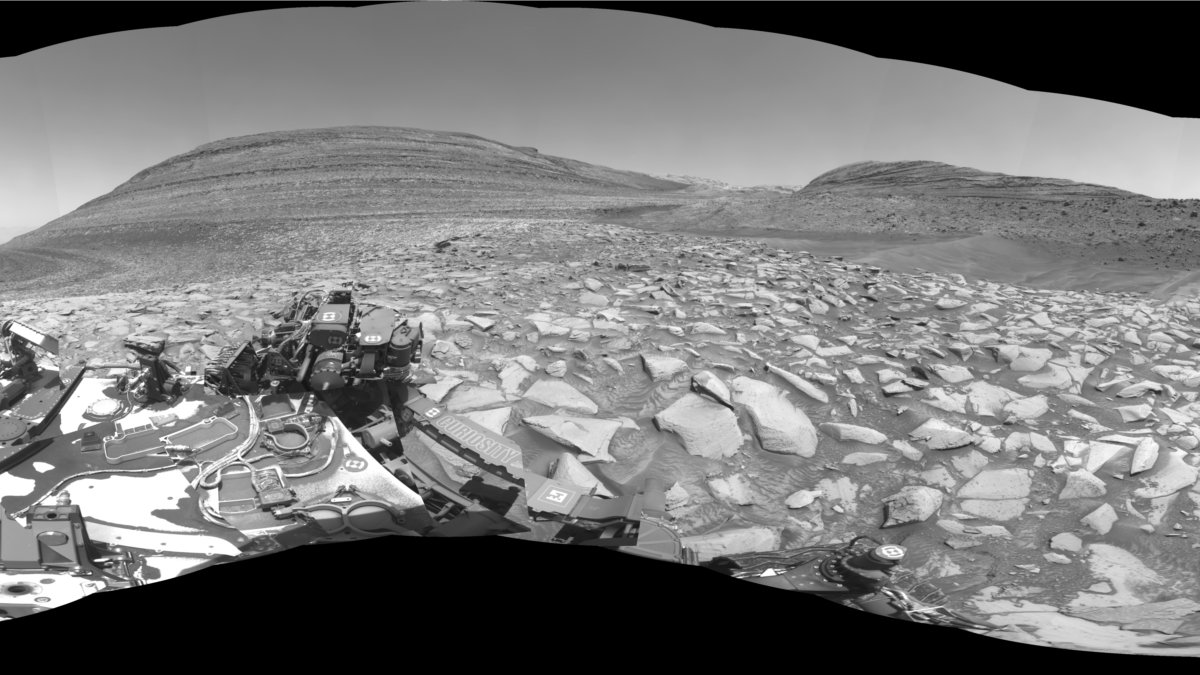The Mars explorer of the American space agency, Curiosity, has reached a new region on the planet Mars in its quest for signs of water and potential life.
The rover, known as Curiosity, recently made its way to an area named the Gediz Vallis Channel. Scientists selected this location based on indications that it may have once contained substantial amounts of liquid water. The term “channel” refers to a natural pathway through which water flows.
Curiosity landed on Mars in 2012 and commenced its exploration of the surroundings near the vast Gale Crater on the planet. Although Mars is presently a cold and arid desert, the Gale Crater region is believed to have hosted a lake in the past and exhibits evidence of past water flow.
Approximately 3.7 billion years ago, a significant meteor impact is thought to have created the crater. During that period, it is theorized that groundwater filled the Gale Crater, while additional water entered through rivers fed by precipitation or melting snow, resulting in the formation of a large lake within the crater.
Since 2014, Curiosity has been investigating an area known as Mount Sharp, positioned around five kilometers above the floor of the Gale Crater. NASA stated that the new territory contains geological formations that developed “over millions of years amidst a shifting Martian climate.”
Curiosity’s primary objective will be to search for traces of ancient water in the vicinity of the Gediz Vallis Channel, with a focus on studying the formation of the channel. NASA researchers have ruled out wind as the forming agent due to the channel’s steep sides. When viewed from space, the channel resembles an ancient riverbed. Subsequently, the channel became filled with large rocks and other debris.
In a recent development, Curiosity captured a 360-degree black-and-white image of the Gediz Vallis Channel using one of its cameras.
The ongoing exploratory missions of the rover can offer scientists a fresh perspective on how the presence of water and the essential chemical components necessary for life evolved over time, as per NASA. Initial examinations indicate the presence of sulfates, which are saline minerals typically formed during the evaporation of liquid water.
Furthermore, NASA reported the discovery of clay minerals in the Mount Sharp region by Curiosity. This finding suggests past interactions between significant water bodies and rock formations.
The movement of water and minerals can lead to the formation of sediment, particles that settle at the base of water bodies over extended periods. The analysis of these sediments can provide additional insights into past water presence and potential life forms.
Ashwin Vasavada, a Curiosity project scientist at NASA’s Jet Propulsion Laboratory in California, expressed, “If the channel or the debris pile were formed by liquid water, that’s very interesting.” He further added, “It would mean that fairly late in the story of Mount Sharp – after a long dry period – water came back, and in a big way.”
Presently, NASA operates two rovers on Mars, with the other being Perseverance, which has been exploring the Jezero Crater on the planet since September 2021. This rover has been collecting samples of rocks, soil, and atmospheric elements during its mission. The Jezero Crater is also believed to have contained significant water bodies in the ancient past.
The materials gathered by these rovers are anticipated to be brought back to Earth in the future. A collaborative mission between NASA and the European Space Agency (ESA) is scheduled for 2028 to accomplish this task.
This article was written by Bryan Lynn for VOA Learning English, based on information provided by NASA.
Quiz – Mars Explorer Arrives at New Area in Search for Evidence of Water, Life

Start the Quiz to find out
\_\_\________________________________________
Words in This Story
crater – n. a large depression in the ground caused by an impact
debris – n. scattered fragments of something
clay–n. fine-grained earthy material composed of hydrous aluminum silicates
ingredient – n. a component part of a mixture or compound
evaporate – v. to convert from a liquid or solid state into a vapor
